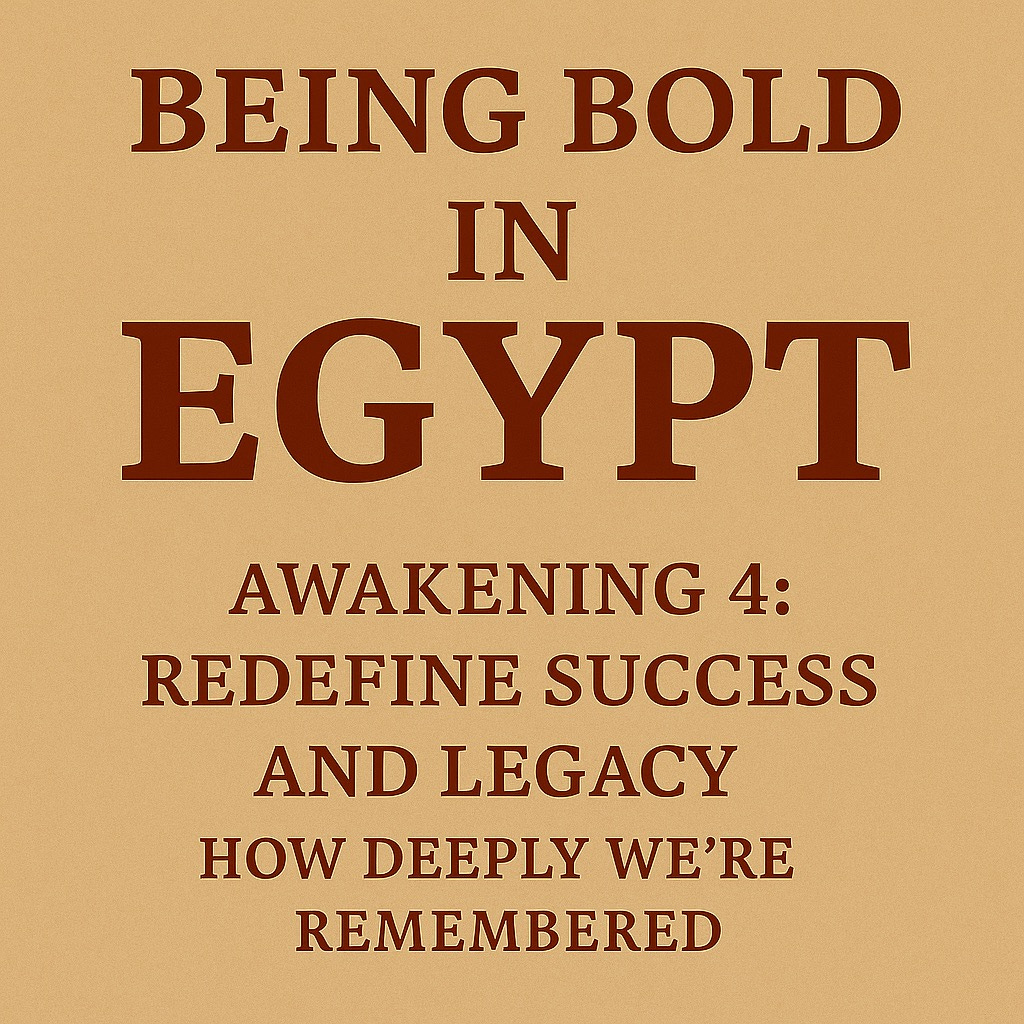Being Bold in Egypt: Awakening 4
What If Being Remembered Isn’t the Point? A Quiet Encounter at the Met
Dear Koffeemocha friends,
It didn’t happen in Egypt.
It happened here in New York, at the Met, on a casual weekday visit with a guest. No itinerary, no expectations. Just a quiet walk through the Egyptian galleries.
That’s when I saw the wall.
A weathered slab of limestone stood before me, inscribed with faint hieroglyphs, lined with rows of color now softened by centuries. At first, I saw what most people see: a museum piece, cordoned off behind glass.
But something pulled me in.
At eye level, slightly to the side, was a narrow vertical slit. I leaned in, curious.
And there he was.
A man who lived over four thousand years ago, in Egypt’s 5th Dynasty. His statue stood silently in the dark, partially hidden, placed deliberately behind this limestone screen. This wasn’t decoration. It was part of a structure called a serdab — a sealed room for the ka, the soul force, to reside and quietly observe.
He wasn’t meant to be noticed immediately. You had to pause. You had to search.
And when you did, you met someone who wasn’t trying to impress you.
He was simply there.
The West Wall
This limestone screen was once the west wall of Kaemsenu’s chapel. In Egyptian belief, the west was where the sun set — the direction of endings, of what lay beyond. These walls often held what’s called a False Door, not meant to open, but to mark a crossing.
In that world, the line between here and elsewhere was symbolic, sacred — and often invisible.
And yet, thousands of years later, on a weekday in Manhattan, I found myself peering through that invisible line.
That small effort transformed a museum exhibit into a spiritual encounter.
What Do We Actually Seek?
We travel far to see monuments, tombs, temples of the dead. But standing there, nose nearly pressed to the glass, I asked myself:
Why?
Why are we drawn to the things that people built knowing their time would eventually end?
Kaemsenu never asked to be famous. He didn’t shape his image to go viral. He didn’t even face forward.
He simply stood in the right place — behind the right wall — waiting for someone to notice.
And that noticing was not urgent.
It was earned by stillness.
Not a Message — A Presence
In Luxor, the tombs weren’t loud either. Painted ceilings. Symbols that pointed upward. Geometry aligned with stars. These weren’t instructions for us. They were orientation tools for another journey.
What stayed with me most was not the grandeur of pyramids or the scale of Abu Simbel, but that slit in the wall at the Met.
Because in that small gap, something passed through — not information, not history — but a kind of presence. I didn’t feel like I was looking at him.
I felt like he was still here.
Choosing Where We Stand
In today’s world, we rush to share, document, be seen…
But Kaemsenu wasn’t placed for visibility. He was placed for continuity. His alignment mattered more than his audience.
And I began to ask myself — not in Egypt, but back home:
What do I build that doesn’t need to be noticed?
Where do I stand when no one’s watching?
Am I placed where I truly belong?
These questions didn’t come with urgency. They just stayed with me. Quietly.
Like Kaemsenu.
This Newsletter as My Wall
Perhaps this space — koffeemocha — is my own version of the west wall.
Not built for attention. But here. Enduring.
Waiting for someone to lean in — not because they have to, but because they’re ready.
Some readers will glance and move on.
Others might pause, adjust their gaze, and find something standing behind the word — unmoving, but alive.
That’s enough.
When the Noise is Gone
Success, as I once knew it, was about signals — measurable outcomes, timelines, milestones. But now I find myself drawn to a different kind of shape:
One that’s not evaluated, but experienced. One that doesn’t reach out, but holds space.
Kaemsenu is still standing.
Not because he demanded to be remembered, but because he was aligned with something far beyond himself.
And that, to me, is something worth noticing.
Stay bold. Stay quietly placed.
Stay open to what waits behind the wall.
Stay behind the wall — until someone looks closely enough to see.
With great respect,
Kefei



Exactly this! Thank you for formulating what I’ve increasingly been feeling and haven’t yet found words for.
In maturity, in the autumn of life, this is precisely the energy and movement we need.
“One that doesn’t reach out, but holds space.”